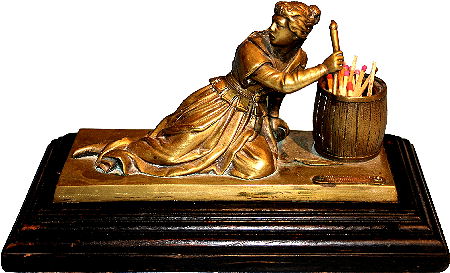|
WELCOME TO MY SIDE ART COLLECTION (unique and the largest one of its kind!)
|
||||||||||||||||||||||||||
In Biedermeier times there started industrial production of goods which penetrated practically into every household both in Germany and also, to some extent, in Great Britain, France and Russia reflecting the spirit of those times. The value and exterior of these objects of culture and art produced between 1835 and 1935 were finally determined by the wellbeing and preferences of their owners. Making use of the variety of materials producers aspired to meet the demands of customers from all social strata. The production which was initiated by Prussian royal cast iron manufactures in Berlin (Berliner Eisen) was later followed by porcelain manufactures: Meissen; Schumann, Berlin; Carl Tielsch, Fürstenberg etc. The initiative was seized by enterprises producing majolica (Bernhard Bloch), by craftsmen in pottery (Maresch), carving and making silverware, as well as such craftsmasters who are well-known for their wonderful things made out of iron as E.G. Zimmermann, Hanau; Josef Glanz, Vienna and many others. Most famous authors of that time were inspired by the greatest invention of Biedermeier epoch, a match, while this very small and plain object had dramatically changed the daily routine life of every single person. The significance of this invention was made more prominent by means of producing unusual or surprising and therefore deserving attention forms of its presentation which sometimes can be valued as real masterpieces. There is not a single museum in the world or a private collection which have ever presented these objects of culture and old times in the whole variety of styles, forms or materials showing remarkable splashes of human fantasy and creativeness which, in turn, enlightens a very important period in the history of our culture. Who is nowadays well aware of how much effort was once put into just getting light into the house, making fire in the oven or the fireplace, lighting a cigar, a candle or a chandelier, striking a sparkle out of steel? No other technique in the past two hundred years was connected with so many inventions and patents as just the controlled ignition. This cultural segment has practically been cut out of history, culture and art, probably, because of the fact that it has automatically been reduced in our imagination to the simplicity of the latest consumer goods involved in the process, i.e., matches and match-boxes, which are normally used by a consumer, thrown away and ignored. Thus the whole subject concerning the techniques of making and preserving fire has also been put in the background of history and culture as unimportant and not worth attention. This Collection and the enormous work connected with it are aimed at proving the opposite. |
||||||||||||||||||||||||||
| Match
holders were produced for the parlour as well as for the study, sleeping
room and, without doubt, for the kitchen in the form of separate figures
or figural compositions, both for the table, wall and pocket, for the household
and travelling. The production involved not only home market but also,
to some extent, foreign markets, mainly, the USA and Great Britain. Those
times are considered to be the most successful and prosperous for a number
of famous craftsmasters, among them Zimmermann in Hanau, Glanz in Vienna,
Kasli in Russia. They managed to achieve the real highlight in their creative
work with such a high quality of their products which was not possible
in the years to follow and especially after 1900. Exhibits presented in
this Collection, which contains about 2500 articles - figural, non-figural,
or organised in compositions - have been collected for more than thirty
years from the remote corners of the world where they had been exported
to or happened to be brought to by their owners. These numerous cultural
and historical values, the existing witnesses of the brief period in the
history of human civilisation could have been destroyed, burnt or lost
for good in Germany or other European countries in the fires of World War
II. Fortunately, they have been preserved in their present state and even
returned into the country of their origin from the USA, Canada, Australia
and South America.
As the aim of the author was to fill in a lot of gaps still existing in our knowledge about different ways of making and preserving fire in the history of human civilisation, this Collection will be interesting not only for the collectors but for every person who is anxious to learn more about our history and culture. It is to a great extent the result of the intensive and enthusiastic research work on the subject which took 30 years, so that the whole Collection in its present state contains numerous old rare exhibits provided with original interpretations, new unknown points of view, versions and discoveries. |
||||||||||||||||||||||||||
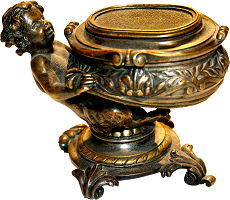 |
||||||||||||||||||||||||||
| Match holder for the table. Unmarked. c. 1880, Bronze. | ||||||||||||||||||||||||||
 |
||||||||||||||||||||||||||
| Matchsafe France, enamel pictures inside and outside. 1880. | ||||||||||||||||||||||||||
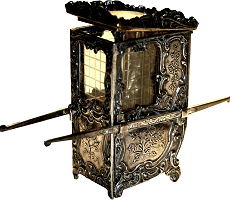 |
||||||||||||||||||||||||||
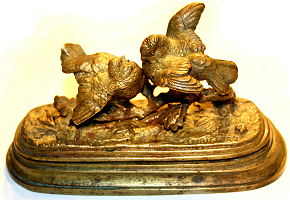 |
||||||||||||||||||||||||||
| Match holder for the table in the form of a sedan. Germany. c. 1870. Silver. | Match holder for the table. Julien Moigniez, France. 1870. Bronze. | |||||||||||||||||||||||||
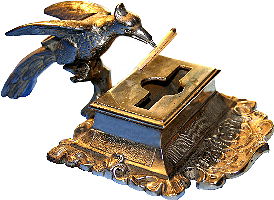 |
||||||||||||||||||||||||||
| Automatic
matchsafe fort he table, iron chromiumed Germany 1890. |
||||||||||||||||||||||||||
 |
||||||||||||||||||||||||||
| Box for matches made of china. Vienna. State manufacture. c. 1860. | ||||||||||||||||||||||||||
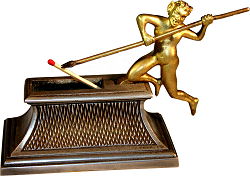 |
||||||||||||||||||||||||||
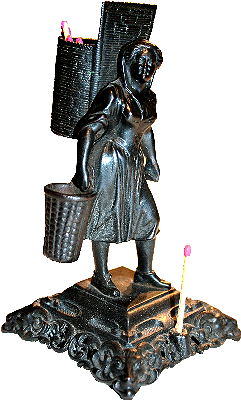 |
||||||||||||||||||||||||||
| Match holder for separate matches. Iron. France. 1880. | ||||||||||||||||||||||||||
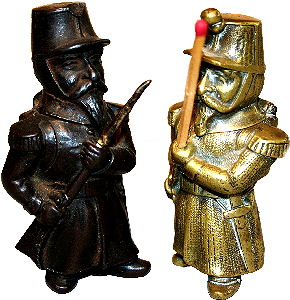 |
||||||||||||||||||||||||||
| Woman with 2 baskets. Berlin iron 1830. | ||||||||||||||||||||||||||
 |
||||||||||||||||||||||||||
| French soliers, J.Glanz, Wien, iron and bronce 1860. | ||||||||||||||||||||||||||
| Automatic machine for the table. Wood. Germany. c. 1870. | ||||||||||||||||||||||||||
| SPECIFICATION OF APPROXIMATELY 2500 ITEMS PRESERVED IN THIS COLLECTION | ||||||||||||||||||||||||||
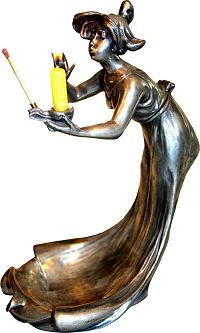 |
||||||||||||||||||||||||||
A.
Match Holders for the Wall (approx. 200) B. Match Safes (approx. 570) C. Automatic Machines for the Table (26) D. Go-To-Bed Match Holders (approx. 200) E. Cast Iron Match Holders [figural] (approx. 138) F. Boxes (approx. 170) G. Figural Match Holders (approx. 430) H. Figural Smoker Sets (approx. 95) I. Smoker Sets Made of Metal [bronze, brass etc.] J. Match Holders for Pull Matches and Disc Matches (18) K. Matchbox Holders for the Table (approx. 80) L. Match Holders for Separate Matches (approx. 200) |
||||||||||||||||||||||||||
 |
||||||||||||||||||||||||||
| Automatic clock to light a match. Germany 1880. | ||||||||||||||||||||||||||
N. Taper Holders (34) O. Fire Appliances and Utensils (24) |
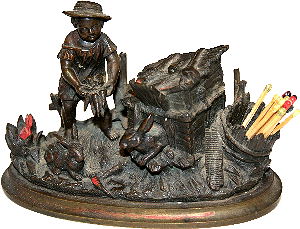 |
|||||||||||||||||||||||||
| Inkwell with matchholder, Bronce, 1880. | ||||||||||||||||||||||||||
1. Chuckmucks (11); P. Instantaneous Light Boxes (approx. 12)
IN ADDITION TO THE MAIN PART CONTAINING MATCH HOLDERS SEVERAL OTHER INTEGRAL PARTS OF THIS COLLECTION ARE ALSO OFFERED:
|
||||||||||||||||||||||||||
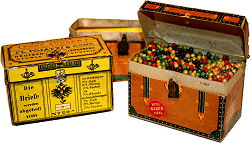 |
||||||||||||||||||||||||||
As the aim of the author was to fill in a lot of gaps still existing in our knowledge about different ways of making and preserving fire in the history of human civilisation, this Collection will be interesting not only for the collectors but for every person who is anxious to learn more about our history and culture. It is to a great extent the result of the intensive and enthusiastic research work on the subject which took 30 years, so that the whole Collection in its present state contains numerous old rare exhibits provided with original interpretations, new unknown points of view, versions and discoveries.
The material in every detail can be found in: Wolf-Rüdiger Reinhardt. Europäische Streichholzbehälter und ihre Verwandten. (forthcoming). It was also the subject of numerous reviews in newspapers, journals and magazines, as well as in radio and TV programs both in Germany and abroad. Part of the Collection was exhibited in a State Museum in Germany.
|
||||||||||||||||||||||||||
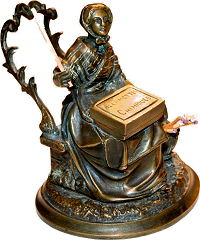 |
||||||||||||||||||||||||||
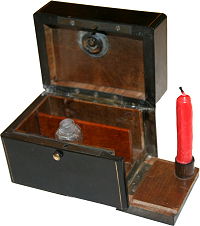 |
||||||||||||||||||||||||||
| Instantaneous light box with a container for phosphorus. Bronce. France. c. 1800. | Instantaneous light box. France. c. 1820. | |||||||||||||||||||||||||
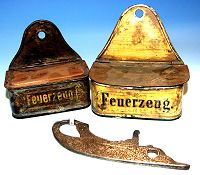 |
||||||||||||||||||||||||||
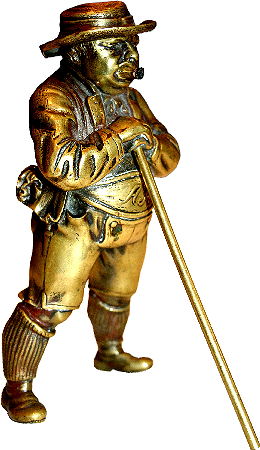 |
||||||||||||||||||||||||||
| Tinder bags for the wall and fire-steel. c. 1800. | ||||||||||||||||||||||||||
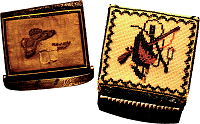 |
||||||||||||||||||||||||||
| Tinder bags in the form of pockets Germany. c. 1820. | ||||||||||||||||||||||||||
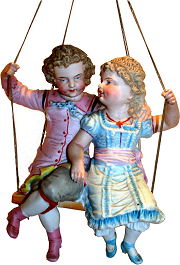 |
||||||||||||||||||||||||||
| Figural taper made of bronze (Zigarrenmann). Designed to light cigars and used as a piece of equipment in cigar shops. The figure used to contain kerosine.Its cigar is provided with a wick. Germany. c. 1880. | ||||||||||||||||||||||||||
 |
||||||||||||||||||||||||||
| Tinder-tube. Germany. 1700. | ||||||||||||||||||||||||||
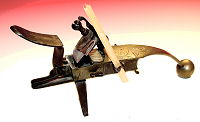 |
Kids on the swings. To be hung under petroleum lamps for used matches. The container is attached to the back of the figure. Germany. C. 1850. | |||||||||||||||||||||||||
| Tinder-pistol.Germany. 1700. | ||||||||||||||||||||||||||
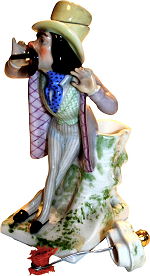 |
||||||||||||||||||||||||||
 |
||||||||||||||||||||||||||
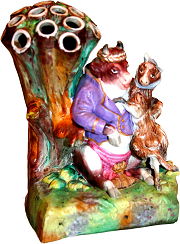 |
||||||||||||||||||||||||||
| Striker. The container was filled with benzine. A special stick made of steel and equipped with a wick at the bottom was first dipped into benzine and then set on fire by means of striking against flint.Germany. c. 1930. | ||||||||||||||||||||||||||
| Figural taper. The figure used to contain kerosine, and the fire was kept burning. A stick made of wire with a shred of textile at the bottom was pulled out of the figure. This burning taper was used presumably to light candles in candlesticks, chandeliers etc. Germany. ?P?, Berlin. c. 1840. | ||||||||||||||||||||||||||
| Taper holder (tapers were inserted into the holes on the top of the figure). Germany c. 1850. | ||||||||||||||||||||||||||
For
further details please contact Questions concerning the price will be appreciated in a written form. |
||||||||||||||||||||||||||
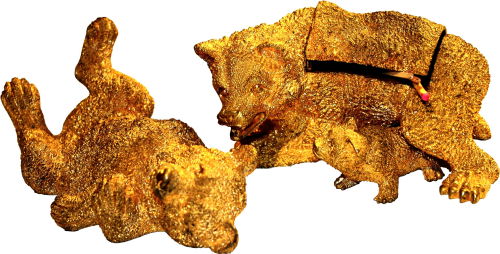
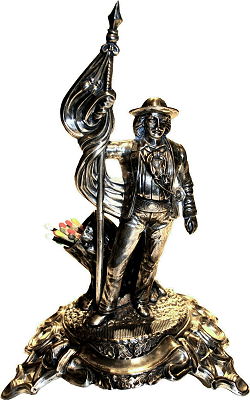 What
kind of articles are presented in this Collection?
What
kind of articles are presented in this Collection?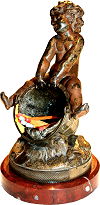 Match
holders were produced for the parlour as well as for the study, sleeping
room and, without doubt, for the kitchen in the form of separate figures
or figural compositions, both for the table, wall and pocket, for the
household and travelling. The production involved not only home market
but also, to some extent, foreign markets, mainly, the USA and Great
Britain. Those times are considered to be the most successful and prosperous
for a number of famous craftsmasters, among them Zimmermann in Hanau,
Glanz in Vienna, Kasli in Russia. They managed to achieve the real
highlight in their creative work with such a high quality of their products
which
was not possible in the years to follow and especially after 1900.
Exhibits presented in this Collection, which contains about 2500 articles
- figural,
non-figural, or organised in compositions - have been collected for
more than thirty years from the remote corners of the world where they
had
been exported to or happened to be brought to by their owners. These
numerous cultural and historical values, the existing witnesses of
the brief period in the history of human civilisation could have been
destroyed,
burnt or lost for good in Germany or other European countries in the
fires of World War II. Fortunately, they have been preserved in their
present state and even returned into the country of their origin from
the USA, Canada, Australia and South America.
Match
holders were produced for the parlour as well as for the study, sleeping
room and, without doubt, for the kitchen in the form of separate figures
or figural compositions, both for the table, wall and pocket, for the
household and travelling. The production involved not only home market
but also, to some extent, foreign markets, mainly, the USA and Great
Britain. Those times are considered to be the most successful and prosperous
for a number of famous craftsmasters, among them Zimmermann in Hanau,
Glanz in Vienna, Kasli in Russia. They managed to achieve the real
highlight in their creative work with such a high quality of their products
which
was not possible in the years to follow and especially after 1900.
Exhibits presented in this Collection, which contains about 2500 articles
- figural,
non-figural, or organised in compositions - have been collected for
more than thirty years from the remote corners of the world where they
had
been exported to or happened to be brought to by their owners. These
numerous cultural and historical values, the existing witnesses of
the brief period in the history of human civilisation could have been
destroyed,
burnt or lost for good in Germany or other European countries in the
fires of World War II. Fortunately, they have been preserved in their
present state and even returned into the country of their origin from
the USA, Canada, Australia and South America. The range and significance of the
material presented in this Collection which consists to 80%
of rare and unique objects of culture and art and embraces a variety of styles, - Biedermeier – Classicism – Gründerzeit – Art
Nouveau – Art Deco, – speak for its existence as a museum
which could be located in a suitable building, probably even integrated
into
appropriate premises, easily accessible for the large public, for
example, in a place or a small town where people often go for holidays,
winter
or summer sports, or both. Existing Museums of Matches in Sweden,
Poland and
Czech Republic unfortunately have only a few old match-boxes to exhibit.
A wide variety of different kinds and forms of match holders with
their cultural and historical background has never been exhibited
in any
museum in the world. With this Collection you have a real chance
to create yourself
a living monument by establishing the only of its kind MUSEUM OF
CULTURE AND ART full of amazing articles of historical and cultural
significance!
The range and significance of the
material presented in this Collection which consists to 80%
of rare and unique objects of culture and art and embraces a variety of styles, - Biedermeier – Classicism – Gründerzeit – Art
Nouveau – Art Deco, – speak for its existence as a museum
which could be located in a suitable building, probably even integrated
into
appropriate premises, easily accessible for the large public, for
example, in a place or a small town where people often go for holidays,
winter
or summer sports, or both. Existing Museums of Matches in Sweden,
Poland and
Czech Republic unfortunately have only a few old match-boxes to exhibit.
A wide variety of different kinds and forms of match holders with
their cultural and historical background has never been exhibited
in any
museum in the world. With this Collection you have a real chance
to create yourself
a living monument by establishing the only of its kind MUSEUM OF
CULTURE AND ART full of amazing articles of historical and cultural
significance!